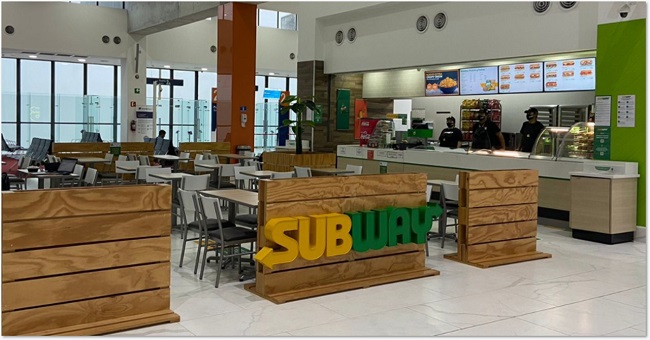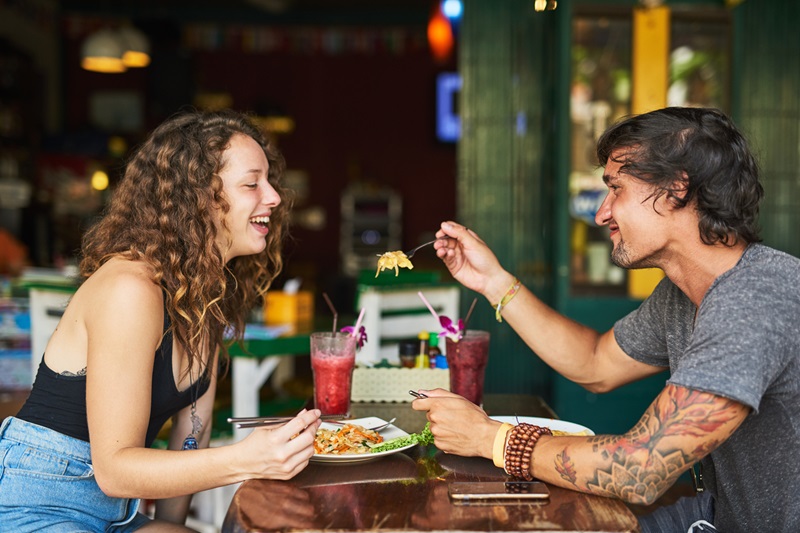Subway Mexico: Expansion, Quality, and Market Presence

Subway Mexico: Expansion, Quality, and Market Presence
Overview of Subway’s Presence in Mexico
Subway, a globally recognized fast-food franchise, has made a significant impact in Mexico’s fast-food industry. Founded in 1965 by Fred DeLuca and Dr. Peter Buck, Subway has grown to become one of the largest and most popular sandwich chains worldwide. With a focus on providing fresh, customizable sandwiches, Subway has carved out a niche in the competitive fast-food market.
Subway’s Global Brand and Its Establishment in Mexico
Subway’s journey in Mexico began as part of its strategic global expansion. Recognizing the potential in the Mexican market, Subway opened its first restaurant in Mexico in 1994. Since then, the brand has rapidly expanded, now boasting over 1,000 locations across the country. This growth is a testament to Subway’s successful adaptation to local tastes and its commitment to providing high-quality, fresh ingredients.
Significance of Subway’s Expansion in the Mexican Market
Subway’s expansion in Mexico is not just about increasing the number of outlets. It’s a strategic move to establish a strong foothold in a market that values fresh, healthy, and convenient dining options. By focusing on quality and customer satisfaction, Subway has managed to differentiate itself from other fast-food chains in Mexico. This commitment to excellence has helped Subway build a loyal customer base and enhance its brand presence in the region.
Subway’s continuous growth and success in Mexico highlight the importance of understanding and catering to local preferences. Through expert marketing strategies and a steadfast dedication to quality, Subway is poised to continue its upward trajectory in the Mexican market, further solidifying its position as a leader in the fast-food industry.
Subway Mexico: Expansion, Quality, and Market Presence
Subway’s History in Mexico
Initial Entry and Growth
Subway entered the Mexican market in 1994, marking the beginning of its journey in one of the most vibrant fast-food landscapes in the world. The first Subway restaurant opened in Mexico City, quickly attracting customers with its unique offering of fresh, customizable sandwiches. The brand’s emphasis on healthy, high-quality ingredients resonated well with Mexican consumers, setting the stage for rapid expansion.
Throughout the late 1990s and early 2000s, Subway experienced significant growth. By 2005, Subway had established a strong presence with over 300 locations across the country. This growth was driven by a combination of strategic location selection, local menu customization, and a strong franchise model that empowered local entrepreneurs.
Key Milestones in Subway’s Growth in Mexico
- 1994: First Subway restaurant opens in Mexico City.
- 2000: Reaches 100 restaurants milestone.
- 2005: Subway expands to 300 locations nationwide.
- 2010: Celebrates opening of the 500th restaurant in Mexico.
- 2015: Achieves 1,000 restaurants mark, solidifying its market presence.
These milestones highlight Subway’s successful penetration and growth within the competitive Mexican fast-food market, underscoring its ability to adapt and thrive.

Expansion Strategy
Analysis of Subway’s Expansion Plans in Mexico
Subway’s expansion strategy in Mexico is focused on increasing its footprint in both urban and rural areas. The brand aims to tap into the growing demand for healthy and convenient dining options by opening new locations in high-traffic areas such as shopping centers, airports, and tourist destinations.
A key element of Subway’s expansion plan is its partnership with local franchisees, which allows for greater market penetration and local adaptation. This strategy not only supports local businesses but also ensures that Subway can meet the specific tastes and preferences of Mexican consumers.
Recent Developments and Future Expansion Goals
In recent years, Subway has continued to innovate and expand. The introduction of new menu items, including locally inspired sandwiches and healthy options, has helped attract a broader customer base. Additionally, Subway has been investing in modernizing its restaurants, incorporating digital ordering systems, and enhancing customer experience through improved store layouts and services.
Looking ahead, Subway aims to increase its number of outlets to 1,500 by 2025. This ambitious goal is supported by a robust franchisee support system and targeted marketing campaigns aimed at reinforcing Subway’s commitment to quality and convenience.
Through strategic expansion and a focus on innovation, Subway is well-positioned to continue its success story in Mexico, catering to the evolving needs of its customers and maintaining its leadership in the fast-food market.
Subway Mexico: Expansion, Quality, and Market Presence
Commitment to Quality and Safety
Ingredient Sourcing
Subway is dedicated to sourcing the highest quality ingredients to ensure that every sandwich meets its rigorous standards. The brand has established a comprehensive supply chain that emphasizes transparency and sustainability. By partnering with local suppliers, Subway not only supports the local economy but also ensures the freshness and quality of its ingredients.
Local partnerships are a cornerstone of Subway’s ingredient sourcing strategy. The company collaborates with Mexican farmers and producers to procure fresh vegetables, meats, and bread. This approach not only guarantees the freshness of the ingredients but also helps Subway reduce its carbon footprint by minimizing transportation distances. Subway’s commitment to quality extends to every aspect of its supply chain, from farm to table, ensuring that customers receive the best possible product.
Quality Assurance Measures
Maintaining food safety and quality is paramount for Subway. The company has implemented stringent protocols to ensure that all food served meets the highest safety standards. These protocols include regular inspections, rigorous hygiene practices, and continuous staff training on food safety.
Subway adheres to several internationally recognized certifications and standards to guarantee food safety. In Mexico, Subway restaurants comply with the Hazard Analysis Critical Control Point (HACCP) system, which is a preventive approach to food safety. Additionally, Subway has received certifications from the Global Food Safety Initiative (GFSI), which sets benchmarks for food safety management.
To further ensure quality, Subway conducts regular audits and inspections of its supply chain and restaurant operations. These audits are performed by third-party organizations to maintain objectivity and uphold the highest standards. By adhering to these stringent quality assurance measures, Subway reinforces its commitment to delivering safe, high-quality food to its customers.
Subway’s dedication to quality and safety is evident in every aspect of its operations. From sourcing the freshest ingredients to maintaining rigorous food safety standards, Subway continues to set the bar high for the fast-food industry in Mexico.
Subway Mexico: Expansion, Quality, and Market Presence
Market Strategy and Consumer Engagement
Marketing Strategies
Subway’s marketing strategies in Mexico are multifaceted, leveraging both digital and traditional channels to reach a broad audience. The brand has executed several successful marketing campaigns that resonate with Mexican consumers by emphasizing fresh ingredients, customization, and healthy eating options.
Digital marketing plays a crucial role in Subway’s strategy. The brand actively uses social media platforms such as Facebook, Instagram, and Twitter to engage with customers, share promotions, and showcase new products. Through engaging content and interactive posts, Subway maintains a vibrant online presence that keeps its audience informed and connected.
In addition to digital efforts, Subway invests in traditional advertising methods, including television commercials, radio spots, and print ads. These campaigns often feature special promotions, new menu items, and seasonal offers designed to attract a diverse customer base. A notable example is the “Sub of the Day” promotion, which has been widely advertised and well-received for its value and variety.
One of Subway’s most successful marketing initiatives in Mexico was the “Fresh and Fit” campaign, which highlighted the brand’s commitment to healthy eating. This campaign not only increased brand awareness but also positioned Subway as a healthier alternative to other fast-food options.
Customer Engagement and Loyalty Programs
Subway engages with its customers through various initiatives aimed at building loyalty and enhancing the customer experience. One of the key strategies is the implementation of loyalty programs that reward repeat customers and encourage frequent visits.
The Subway Rewards program is a cornerstone of the brand’s customer engagement strategy. This program allows customers to earn points for every purchase, which can be redeemed for free sandwiches, drinks, and other menu items. By offering tangible rewards, Subway incentivizes customer loyalty and fosters a sense of community among its patrons.
In addition to the rewards program, Subway frequently runs promotions and special offers tailored to the Mexican market. For instance, the “2 for 1” deal and the “Kids Eat Free” promotion have been particularly popular, driving increased foot traffic and sales during promotional periods.
Subway also utilizes email marketing and a mobile app to keep customers informed about new products, upcoming promotions, and exclusive deals. The app, in particular, provides a seamless experience for customers to place orders, earn rewards, and receive personalized offers based on their preferences and purchase history.
Through these comprehensive marketing and engagement strategies, Subway not only attracts new customers but also builds lasting relationships with existing ones. By continuously innovating and adapting to market trends, Subway ensures that it remains a preferred dining choice in Mexico.

Subway Mexico: Expansion, Quality, and Market Presence
Challenges and Opportunities
Market Challenges
Subway, like any major fast-food chain, faces several challenges in the Mexican market. One significant challenge is the highly competitive landscape. Mexico’s fast-food industry is crowded with both local and international brands, such as McDonald’s, Burger King, and local favorites like El Fogoncito and Toks. These competitors offer diverse menus and have established strong brand loyalty among Mexican consumers.
Consumer preferences in Mexico also present a challenge for Subway. While there is a growing demand for healthier dining options, traditional Mexican cuisine remains deeply rooted in the culture. This makes it essential for Subway to continuously innovate and adapt its menu to align with local tastes while maintaining its core offerings of fresh and healthy ingredients.
Economic fluctuations and varying regional economic conditions can also impact Subway’s performance. In times of economic downturn, consumers may prioritize cheaper dining options, which can affect sales. Additionally, logistical challenges such as maintaining a consistent supply of fresh ingredients across all locations can pose operational difficulties.
Growth Opportunities
Despite these challenges, Subway has numerous opportunities for growth in the Mexican market. One potential area for expansion is tapping into the growing trend of health-conscious eating. By continuing to innovate and introduce new, healthy menu items, Subway can attract health-focused consumers who seek nutritious and convenient meal options.
Subway can also leverage the increasing use of digital platforms to enhance its customer engagement and ordering processes. Expanding the functionality of its mobile app, offering exclusive online promotions, and improving the online ordering experience can help attract tech-savvy customers and streamline operations.
Geographic expansion presents another significant opportunity. While Subway has a strong presence in urban areas, there is potential for growth in smaller towns and rural regions where competition is less intense. By strategically opening new locations in these underserved areas, Subway can capture a new customer base.
Innovation in menu customization and local flavors can also drive growth. Introducing region-specific sandwiches and integrating popular local ingredients can help Subway resonate more with Mexican consumers. Additionally, collaborating with local chefs or influencers to create limited-time offerings can generate buzz and attract new customers.
Finally, sustainability initiatives can enhance Subway’s brand image and appeal to environmentally conscious consumers. Implementing eco-friendly practices, such as reducing plastic use and sourcing ingredients sustainably, can position Subway as a responsible and forward-thinking brand in the Mexican market.
By addressing the challenges and capitalizing on these opportunities, Subway can continue to strengthen its presence and achieve long-term success in Mexico.






